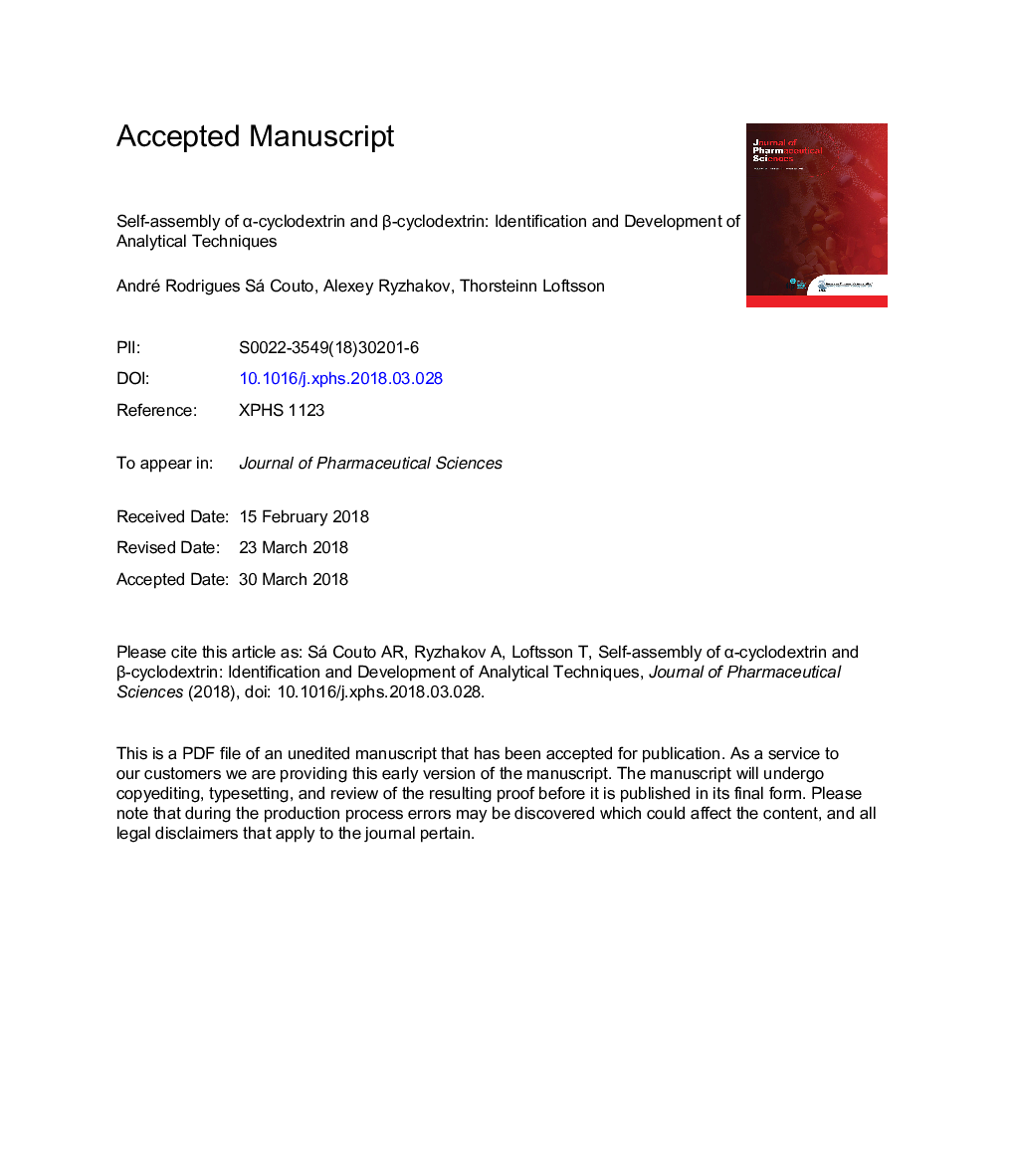| Article ID | Journal | Published Year | Pages | File Type |
|---|---|---|---|---|
| 8513159 | Journal of Pharmaceutical Sciences | 2018 | 33 Pages |
Abstract
Recently, it has been shown that cyclodextrins (CDs) self-assemble in aqueous solutions to form aggregates. Such aggregation can give rise to formation of particulate matter in aqueous solutions. However, the analytical methodology available to detect and quantify these aggregates is still quite inadequate. Here, 5 different methods for evaluation of CD aggregate formation and determination of the critical aggregation concentration are evaluated: osmometry, viscosity, surface tension, dynamic light scattering, and permeability studies. Both the viscosity and surface tension methods applied were inadequate for aggregate detection, whereas the osmometry method can be used to study CD aggregation but with some limitations. Dynamic light scattering has also some limitations although it can be applied to detect CD aggregates and to estimate their hydrodynamic diameter. Overall, permeation studies proved to be the best method to detect and determine critical aggregation concentration. These results suggested that β-cyclodextrin (βCD) has higher tendency to aggregate than α-cyclodextrin (αCD). Filtration of αCD and βCD solutions affected the aggregate size distribution by breaking larger aggregates in to smaller ones that then reassembled to regenerate the larger ones upon storage. The osmolality studies showed that in aqueous αCD and βCD solutions, solute-solute interactions are favored over solute-solvent interactions with consequent CD aggregate formation.
Related Topics
Health Sciences
Pharmacology, Toxicology and Pharmaceutical Science
Drug Discovery
Authors
André Rodrigues Sá Couto, Alexey Ryzhakov, Thorsteinn Loftsson,
